Clay soil presents its own unique challenges in gardening and farming, particularly in terms of drainage, compaction, and nutrient availability. However, utilizing cover crops can be an effective and environmentally friendly strategy to enhance the health of clay soil. On this page, we will explore specific cover crops that can significantly contribute to improving clay soil, focusing on their benefits, characteristics, and roles in sustainable agriculture.
Cover Crops to Add Organic Matter
One of the primary benefits of planting cover crops in clay soil is their ability to increase organic matter. Organic matter improves soil structure and is crucial for enhancing aeration, drainage, and moisture retention. Moreover, it acts as a habitat for beneficial microorganisms, which play a vital role in nutrient cycling. Certain crops, when grown as cover crops, are particularly effective at enriching clay soil with organic matter. They have deep roots, vigorous growth habits, and the ability to decompose and contribute biomass, which, when turned into the soil, elevates the organic content.
For instance, legumes such as vetch and peas can fix atmospheric nitrogen, adding to the nutrient pool while their decaying roots and shoots build organic matter levels. Similarly, the growth of fibrous-rooted cover crops can aid in breaking up tightly packed clay soil. A diverse selection of cover crops provides synergy in improving soil health, leading to more productive harvests, improved erosion resistance, and enhanced resilience against extreme weather conditions.
Clover

Clover is a standout choice for improving clay soil, possessing several attributes that make it beneficial for this challenging medium. Being a legume, clover has the ability to fix nitrogen from the atmosphere, enriching the soil with this essential nutrient, which is often deficient in clay. Red clover and white clover are two popular varieties that can thrive in clay soils.
Incorporating clover as a cover crop provides multiple benefits. Its extensive root system helps to aerate the soil, breaking up compacted areas and enhancing drainage, which can counterbalance the inherent sogginess of clay during wet seasons. Clover also puts forth a dense canopy that suppresses weeds, reducing competition for nutrients, and minimizing erosion due to heavy rainfall or wind. Once clover is tilled into the soil, its biomass helps to build organic matter, improving soil structure and fertility. Its bloom period is also beneficial for pollinators, making it an excellent multi-species cover crop for diverse ecosystems.
Winter Wheat

Winter wheat serves as a robust and adaptable cover crop for clay soil, particularly in regions with colder winters. Sowing this crop in the fall allows it to establish a strong root system before winter, which assists in preventing soil erosion. The roots of winter wheat penetrate deeply into the clay, creating channels that improve soil structure and water infiltration, thereby helping to alleviate compaction issues associated with clay soils.
This cereal crop also plays a crucial role in building organic matter. As it matures, winter wheat develops a significant amount of biomass that, when incorporated into the soil before planting a subsequent crop, provides a rich source of organic material. Additionally, winter wheat is beneficial for nutrient cycling; upon decomposition, it releases nutrients that can be readily available for spring-planted crops.
In terms of weed suppression, the dense growth habit of winter wheat effectively outcompetes many harmful weeds, ensuring that soil remains productive for the following season. Furthermore, it can be harvested for grain, providing an economic return before transitioning to another crop, making it a dual-purpose cover crop option.
Buckwheat
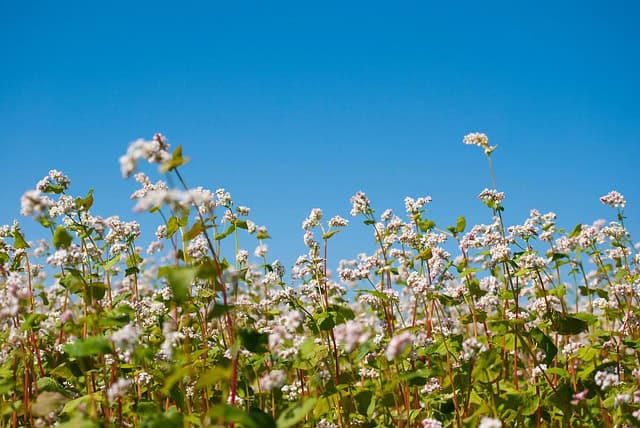
Buckwheat is an exceptional cover crop choice for clay soil, particularly during the warmer months. Known for its rapid growth and adaptability, this grain-like plant thrives in slightly acidic to neutral soils and excels in environments where other crops might struggle. One of the key benefits of buckwheat is its ability to improve soil structure. With a fibrous root system that grows close to the soil surface, buckwheat helps to loosen and aerate compacted clay, which can enhance drainage—crucial for preventing waterlogged conditions that are common in heavy soils.
Additionally, buckwheat’s fast growth provides significant biomass within a short time frame. When mowed and incorporated back into the soil before seeding a cash crop, the decaying buckwheat plant contributes valuable organic matter. Moreover, this cover crop is particularly effective at suppressing weeds. Its rapid canopy development shades the ground, limiting the sunlight available for weeds and promoting a healthier growing environment for subsequent crops. Buckwheat also has a unique ability to attract beneficial insects, such as pollinators and predatory insects, which can help manage pest populations in the garden or farm.
Alfalfa
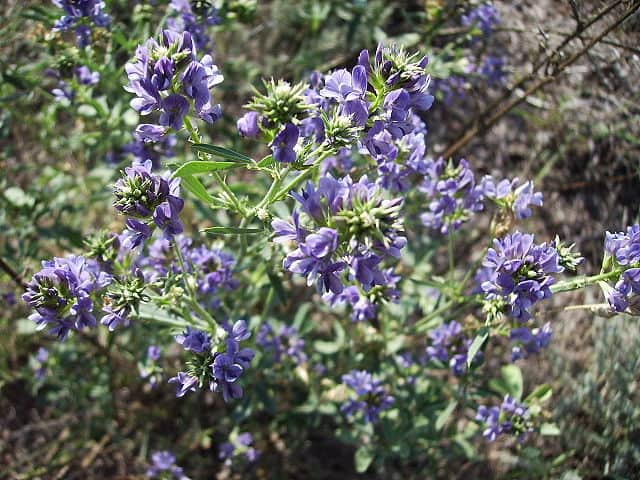
Alfalfa is often considered one of the best cover crops for enriching clay soil, thanks to its deep taproot that can penetrate hardpan layers and compacted soil. This characteristic root system helps break up dense clay, improving soil aeration and drainage. Furthermore, as alfalfa grows, it draws nutrients from deep within the soil, only to return these vital nutrients back to the surface when the plant decomposes. This process enhances the overall nutrient profile of the soil, addressing common deficiencies often found in clay.
Another significant benefit of alfalfa is its exceptional nitrogen-fixing ability. Unlike many other cover crops, alfalfa can fix large amounts of atmospheric nitrogen due to its symbiotic relationship with specific soil bacteria. This process enriches the soil and promotes healthier growth for subsequent crops, particularly those that require higher nitrogen levels. Additionally, alfalfa’s dense growth habit effectively outcompetes weeds, reducing the need for chemical herbicides. Its blooming period is also a boon for local ecosystems, providing a valuable food source for pollinators and beneficial wildlife, hence supporting biodiversity within agricultural landscapes.
Fava Beans
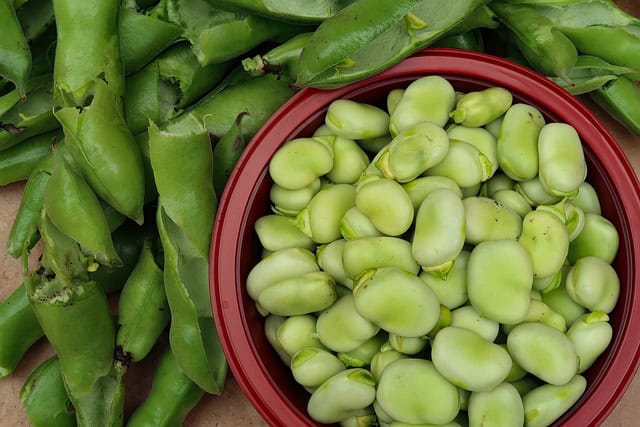
Fava beans, or broad beans, are another excellent option for those working with clay soil. These legumes are hardy and can thrive in a variety of climatic conditions, making them adaptable for use in different growing environments. The unique structure of fava bean roots not only helps to break up heavy clay soil but also encourages improved soil aeration and drainage, addressing some of the fundamental physical challenges associated with clay.
Fava beans play an essential role in nitrogen fixation, similar to alfalfa. This means that they can absorb nitrogen from the atmosphere and convert it into a form that is easily accessible to plants, enriching the soil during and after their growth cycle. This natural fertilization capability is particularly beneficial for subsequent crops that are nitrogen-hungry, ultimately boosting yield potential.
Moreover, fava beans can be sown as a winter cover crop in many regions, providing protection against soil erosion and compaction during the fall and winter months. In early spring, they can be tilled under to add organic matter and nutrients to the soil, enhancing overall fertility. Their substantial biomass also serves to suppress weeds effectively, ensuring that the soil remains productive without the excessive need for herbicides.
Cover Crops to Break Up Compacted Soil
Compacted soil poses serious threats to plant growth, limiting the flow of air and water to roots and reducing the overall soil fertility. To address this issue, cover crops with deep and vigorous root systems have been shown to penetrate and fracture compacted layers, making the soil more conducive to plant development. The use of such cover crops can significantly enhance soil structure and health, paving the way for a more resilient cropping system.
Daikon Radishes

Daikon radishes, with their impressive taproots, are among the most effective cover crops for breaking up compacted soil. These deep-rooted plants can penetrate hard soils, reaching depths of up to 18 inches or more. Their probing roots physically break apart compacted layers, creating channels that improve aeration and drainage. This is particularly beneficial in clay soils, where dense layers can restrict root growth of subsequent crops, leading to stunted plants and reduced yields.
In addition to alleviating compaction, daikon radishes also enhance soil fertility. As the radishes grow, they naturally exude compounds that can help solubilize nutrients, making them more accessible to other plants. When left in the soil to decay, daikon roots contribute organic matter and improve the overall nutrient profile of the soil. Furthermore, as they decompose, they release moisture and nutrients, supporting the health of subsequent cash crops planted in the same area.
Another compelling advantage of daikon radishes is their effectiveness in controlling weeds. Their rapid growth provides excellent ground cover that can outcompete many common weed species, making it easier to manage weed pressure without relying on chemical herbicides. Lastly, they serve as a food source for pollinators and beneficial insects, promoting biodiversity in agricultural landscapes.
Rye
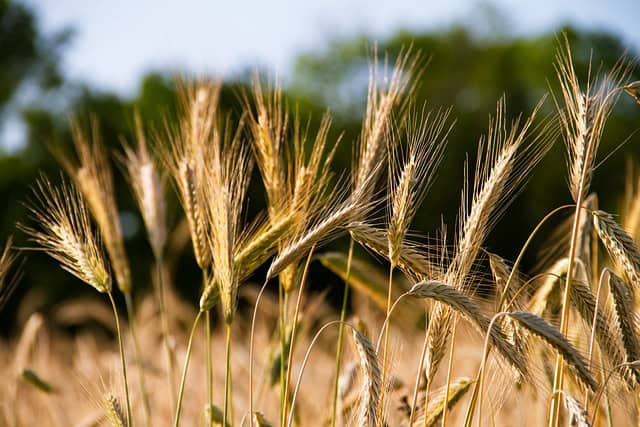
Rye is a versatile cover crop favored by many farmers for its myriad benefits, particularly its ability to improve soil structure and break up compacted soil. With its fibrous root system, rye establishes quickly and grows densely, generating substantial biomass that can be tilled back into the soil. While rye may not have as deep of a taproot as daikon radishes, its extensive lateral roots are remarkably effective at loosening compacted layers, enhancing soil drainage and aeration.
Moreover, rye’s growth habit allows it to choke out weeds effectively, limiting competition for nutrients and water. This weed suppression is further enhanced as rye matures and dies back, creating a mulch layer that protects soil from erosion and reduces evaporation during hot summer months.
Rye also excels in nutrient management, particularly in capturing nitrogen. It can take up excess nitrogen that might otherwise be lost through leaching, especially during the winter months. When incorporated back into the soil, this nitrogen is released and made available to future crops, making rye an excellent component in crop rotation systems.
Moreover, planting rye as a winter cover crop can provide protection against soil erosion and nutrient depletion during the off-season months. Its growth in fall and winter helps keep soil in place, providing stability to the soil structure and promoting moisture retention.
Both daikon radishes and rye provide invaluable benefits when used as cover crops in clay soil settings. By tackling soil compaction directly, these crops help create an environment conducive to healthy plant growth and productive yields. Integrating them into an agricultural plan not only enhances the soil but also fosters sustainable and responsible farming practices, leading to long-term agricultural success.
Edible Clay-Busting Plants
Edible clay-busting plants are an innovative solution for farmers and gardeners dealing with the challenges of clay soil. These plants help to break up compacted soil, enhance organic matter, and provide nutritious harvests, creating a win-win situation for sustainable agriculture. By incorporating these plants into your cropping system, you can improve soil health while also maximizing productivity.
Artichoke (Cynara scolymus)
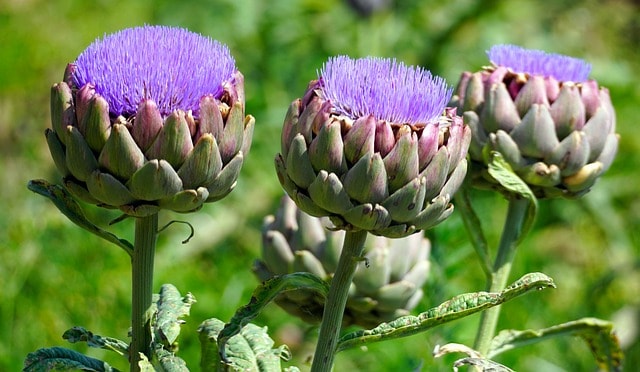
Artichokes are more than just a culinary delight; they are also powerful allies in the fight against compacted clay soil. With a deep taproot that can reach depths of over three feet, artichokes can penetrate tough soil layers, breaking up compacted sections effectively. This deep root system increases soil aeration, allowing water and nutrients to move more freely, which is essential for the development of other plants in the area.
Moreover, the substantial biomass produced by artichoke plants contributes valuable organic matter to the soil when they are cut back, either before winter or after the growing season. This process improves the soil structure, enhances moisture retention, and promotes a healthier microbial community, which is critical for nutrient cycling. As the artichokes decompose, they release nutrients, particularly potassium and phosphorus, which can benefit subsequent crops.
Additionally, artichokes are perennial plants, meaning they can provide benefits year after year with proper management. Their presence in the garden not only enriches the soil but also offers the opportunity for a harvest of delicious buds in the spring and summer. With a unique flavor profile, artichokes can elevate culinary dishes while simultaneously working hard to improve soil health.
Cowpea (Vigna unguiculata)

Cowpeas are an excellent choice for those seeking edible cover crops that thrive in clay soil. These legumes are known for their extensive root systems, which spread laterally and allow them to reach nutrients and moisture unavailable to shallower-rooted plants. This adaptability gives cowpeas the ability to aerate the soil effectively, stimulating drainage and reducing compaction in clay-heavy areas.
Cowpeas contribute significantly to nitrogen fixation. Like other legumes, they form symbiotic relationships with nitrogen-fixing bacteria in their root nodules, capturing atmospheric nitrogen and converting it into a usable form for plants. This natural fertilization process addresses soil nutrient deficiencies, particularly in terms of nitrogen, which can greatly enhance the growth of subsequent crops planted in the same soil.
Furthermore, cowpeas are remarkably drought-tolerant once established, which can be beneficial in regions where clay soils may become waterlogged during wet periods but dry out during droughts. As a cover crop, they can be sown during the warmer months, providing ample ground cover that suppresses weeds and reduces soil erosion. Their fast growth habit allows them to produce substantial biomass that can be cut and turned into the soil before planting another crop.
With their ability to improve soil structure while providing a source of high-quality protein, cowpeas serve as a vital component of sustainable farming practices. They not only enhance the health of clay soils but also contribute to dietary security and economic viability for growers.
Mustard (Brassica spp.)

Mustard plants are a popular choice among cover crops due to their versatile benefits and rapid growth. These crops are particularly suited for clay soils, where they flourish in the moderate moisture retention that this soil type provides. Mustard has a strong fibrous root system that plays a vital role in breaking up compacted layers, thus improving soil structure and enhancing aeration. This is especially useful in dense clay soils, where root penetration and water movement can be significantly restricted.
Furthermore, mustard species are known for their biofumigation properties. When incorporated back into the soil, the decomposing mustard plants release natural compounds, such as glucosinolates, which can suppress harmful soil pathogens, nematodes, and weeds. This biological control can reduce the need for synthetic pesticides and contribute to a more balanced soil ecosystem.
Mustard also offers the benefit of rapid biomass production, which can improve soil organic matter when turned under. This organic matter enhances nutrient retention and water-holding capacity, making the soil more productive in the long term. Additionally, mustard plants have a quick life cycle, allowing for multiple crop rotations or cover crops throughout the growing season, thus maximizing the use of the land.
Annual Sunflower (Helianthus annuus)

Annual sunflowers present an intriguing option as a cover crop for clay soil, combining aesthetics with functionality. These robust plants boast a deep taproot that effectively breaks up compacted layers, thereby improving soil aeration and drainage. The sunflower’s root system also enhances soil structure, promoting a better environment for other plants to thrive in.
Sunflowers are particularly beneficial due to their ability to reduce soil erosion. When planted in rows, their large, sturdy stalks create wind barriers and their extensive root systems help anchor the soil, minimizing the risk of erosion during heavy rains or strong winds. Moreover, sunflowers attract beneficial insects, including pollinators such as bees and beetles, which can support a healthy ecosystem both in the soil and above ground.
As a cover crop, sunflowers produce substantial biomass, which can be mowed and incorporated into the soil before planting the next crop. This process not only adds organic matter but also increases nutrient availability as the plant material decomposes. Furthermore, sunflowers have a natural inclination to accumulate nutrients. Their ability to draw up excess nitrogen, phosphorus, and potassium from the soil can help prevent nutrient leaching and improve soil fertility over time.
Advantages of Clay Soil
While clay soil is often viewed as a challenging medium for gardeners and farmers, it has several inherent advantages that can be leveraged with the right management practices. One of the primary benefits of clay soil is its high nutrient-holding capacity. Clay particles carry a negative charge, which allows them to attract and hold onto positively charged nutrient ions. This property enables clay soils to retain nutrients better than sandy soils, ensuring that plants have access to essential minerals and elements throughout their growing season.
Additionally, clay soil has excellent water retention capabilities. This feature can be advantageous in regions where water availability fluctuates, as clay soil can hold moisture for extended periods compared to looser soil types. Properly managed clay soil can thus provide a dependable moisture source for crops, particularly during dry spells.
Clay soils also tend to warm up earlier in the spring than sandy soils, which can enhance the growing season for certain crops. The dense structure of clay warms up more uniformly, supporting germination and early plant growth. Furthermore, the slow release of nutrients from clay makes it possible to create a more balanced feeding regime for plants, aiding in steady growth rates.
Understanding the advantages of clay soil can help farmers select the appropriate cover crops, such as mustard and sunflowers, to maximize the benefits of their soil. By utilizing cover crops effectively, growers can improve the structure, aeration, and fertility of clay soils, transforming them from challenges into productive foundations for successful cropping systems.
Disadvantages of Clay Soils
Despite their nutrient-holding capacity and water retention abilities, clay soils present several challenges that can impede crop growth and production. One of the most significant disadvantages is their tendency to become compacted. The small particles in clay soil, when tightly packed, restrict air and water movement, leading to poor drainage. Excessively wet conditions can suffocate plants’ roots and promote diseases such as root rot.
Another issue with clay soils is their slow warming in the spring. This can delay planting times as they retain moisture longer than looser soils, making them colder and less conducive to early-season crop growth. Consequently, farmers may miss optimal planting windows, leading to shorter growing seasons and potentially reduced yields.
Clay soils can also exhibit poor structure, which complicates root penetration. The dense texture prevents roots from easily expanding and accessing nutrients, causing stunted growth or nutrient deficiencies. Additionally, when clay soils dry out, they can become hard and crusty, making them challenging to till or cultivate. This crust can also impede seedling emergence, stifling the establishment of new plants.
Lastly, clay soils can create challenges for water management. In times of heavy rainfall, they may not drain quickly enough, leading to surface runoff and erosion. Conversely, during dry spells, clay can become overly dry, causing it to contract and form cracks. These cycles of wetting and drying can further exacerbate structural problems and complicate soil management practices.
What Do Clay Soils Need?
To maximize the productivity of clay soils and overcome their disadvantages, it is essential to provide the right management practices and inputs. One of the fundamental needs of clay soils is the addition of organic matter. Incorporating organic materials, such as compost, aged manure, or green manure crops, enhances soil structure and improves aggregation. This process aids in creating better pore spaces, allowing for increased aeration and drainage.
Another vital aspect is the use of mulches. Applying organic mulch on the surface can help retain moisture, reduce temperature fluctuations, and suppress weed growth. As the mulch breaks down, it contributes additional organic matter back into the soil, enriching its nutrient content over time.
Soil amendments such as gypsum can also be beneficial for improving the structure of clay soils. Gypsum helps promote flocculation—the clustering of soil particles—creating larger aggregates that enhance water infiltration and aeration. This process can help alleviate some compaction issues and improve the overall tilth of the soil.
In addition, maintaining optimal pH levels is crucial for healthy clay soils. Many clay soils tend to be more alkaline or acidic, which can influence nutrient availability. Regular soil testing can help determine the pH and specific nutrient needs, allowing for targeted amendments that support healthy crop growth.
Finally, the incorporation of specific cover crops can complement the needs of clay soils. Plants like legumes not only add organic matter, but they also enhance nitrogen content through fixation, which supports overall soil fertility. Additionally, choosing cover crops with deep rooting systems can further address compaction and enhance soil structure.
By understanding the unique disadvantages of clay soils and what they need to thrive, farmers and gardeners can adopt effective strategies that enhance soil health and improve agricultural outcomes. Incorporating tailored cover crops, adding organic matter, and applying necessary soil amendments can transform clay soils into a productive and sustainable growing medium, ultimately fostering a successful cropping system.





